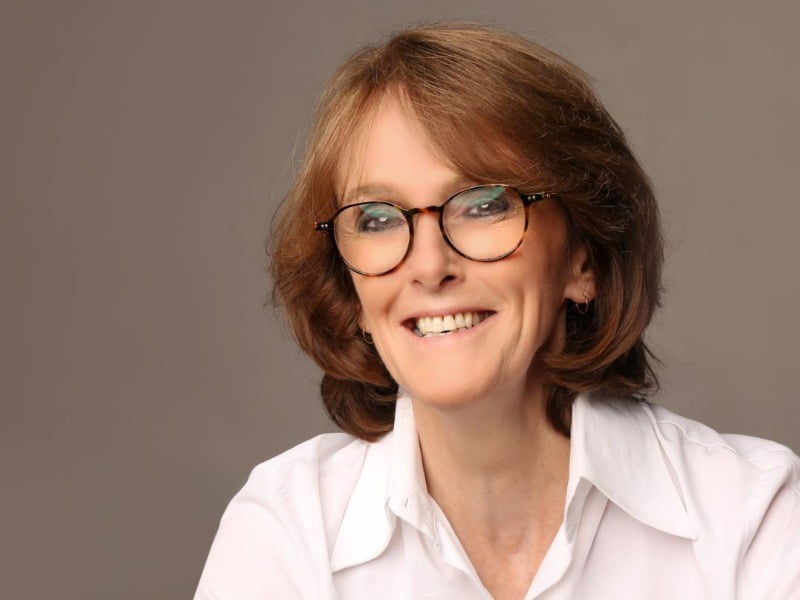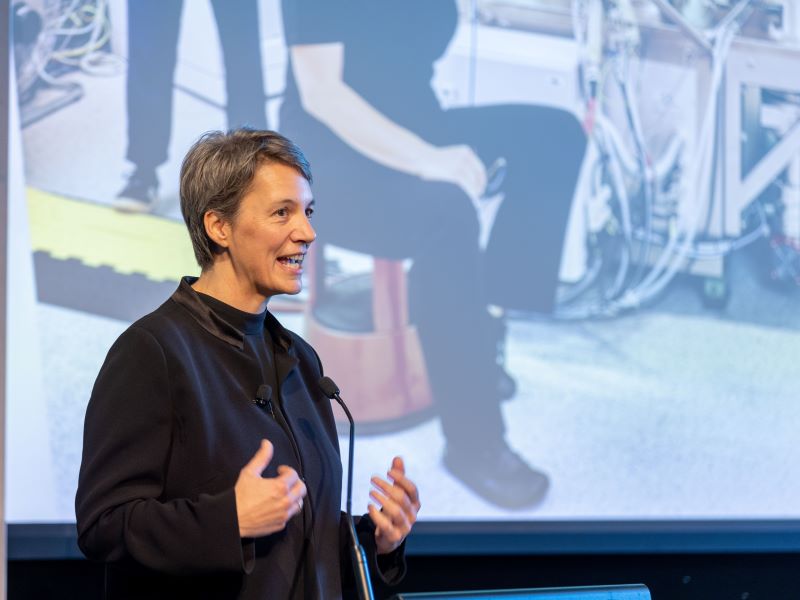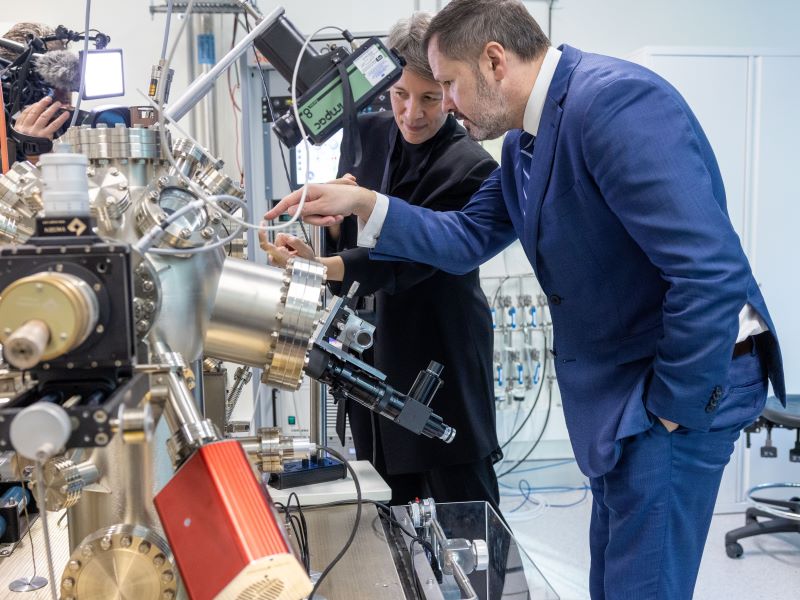As quantum technologies promise to disrupt conventional computing and its underlying semiconductor industry, a Sydney company’s world first offers a chance for Australia to straddle the change while pushing to the front of a global technology race.
On Thursday, Silicon Quantum Computing (SQC) announced a breakthrough decades in the making – it had engineered the world’s first quantum processor at the atomic scale to simulate the behaviour of a small organic molecule.
SQC delivered it nine years after the single atom transistor – a remarkably similar timeframe to that between conventional transistors and processors around the 1950s – and two years ahead of the target dates SQC shares publicly.
The timeframe is the most exciting part of Thursday’s announcement for Australia’s chief scientist Dr Cathy Foley, who said SQC is not overstating or overselling their achievements in a quantum market awash with big claims.
“What we’re seeing is delivery which is above what [SQC] said they will do at a faster rate,” Dr Foley told InnovationAus.com. “So that, from my perspective, is a really important thing for the country.”

Led by 2018 Australian of the Year Professor Michelle Simmons, SQC engineered the breakthrough quantum processor last year, but chose to wait for their finding to be validated in the Nature Journal before announcing it to the world.
It meant withholding a development for the company at a time when money is pouring into quantum around the world, and as SQC looks to secure more funding of its own.
But it gave the announcement a credibility often missing from recent quantum announcements, according to CSIRO Quantum Technologies Future Science Platform lead Professor Jim Rabeau.
“It’s not just a PR thing,” he told InnovationAus.com. “It’s really fundamentally been vetted by the by the scientific community. It’s really great timing because it just shows that we have such strength in quantum hardware development.”
Australian experts agreed a quantum processor at the atomic scale that can simulate the behaviour of a small organic molecule is a big deal.
“The ability to simulate matter at the atomic scale allows us to start understanding how nature and the physical world really work. This could lead to major breakthroughs in solving many of the world’s problems,” said New South Wales chief scientist Professor Durrant-Whyte said.
It also marks a significant step towards quantum computers, Professor Rabeu said.
“When you can start to move from a single unit like a transistor effectively in the quantum devices that they’ve been working on to something that is more comprehensively — and validated as such through the experiment – to an actual quantum circuit, from that point of view, I think it’s extremely exciting.”
The technical feat of positioning matter with sub-nanometre precision boggled the mind of Australia’s chief scientist.
“Your fingernails grow about a nanometre in seconds. That’s very small – so they are sub that. That’s mind boggling,” Dr Foley said.
“That’s extraordinary, just the human capability to control matter in that way in itself is something as humans we should be very proud of.”
Dr Foley said there is still significant work to do to scale the SQC quantum processor to a point where it can do more complex things well beyond a classical computer, but the development shows an Australian team already “nudging the edges of what is possible with classical computers”.
“It’s not been scaled up [yet] and I’m not going to pretend the scale up is going to be easy, because that in itself will be hard work,” she said.
“But they’ve been able to show that the modelling of a small molecule in a way that is allowing them to do something which a traditional computer would have struggled to achieve…The whole community working across Australia and globally on quantum technologies, particularly ones that will lead to quantum computing, should be really very pleased, thrilled [and] excited.
“Because this is something which sort of shows that we’re on the right pathway to get there.”

Importantly, the SQC progress is being made with silicon, the most widely used material in microelectronic devices; and one which has well established value chains and fabrication techniques developed over 60 years.
Silicon, and a focus on quality over quantity, is what sets SQC apart, according to founder Professor Michelle Simmons.
“That’s the key difference. Most people haven’t thought through what their manufacturing processes will be…we have manufacturing at the core,” she told InnovationAus.com
SQC operates out of state-of-the-art facilities at the University of NSW in Sydney. Quantum success there offers a chance to slot into the state government’s new plan to develop a semiconductor industry, and a global shift away from traditional powerhouses.
Professor Rabeau said Australia has an opportunity to carve out a niche in the changing landscape, and SQC’s breakthrough on silicon creates a chance to straddle the existing semiconductor industry and the emerging quantum one.
“One of the things that’s important for Michelle’s direction and anyone else that is utilising silicon to build a quantum chip is that they can leverage and unleash the enormous capability that already exists,” Professor Rabeau said.
Silicon is not necessarily the “proven path” to quantum chips, he said, and other materials come with their own advantages and trade-offs. But SQC has a unique opportunity to leverage the existing capabilities of the established industry which is increasingly being examined by policymakers in Australia.
The New South Wales government has funded a new Semiconductor Service Bureau with $4 million to operate from the Tech Central innovation district. It will be tasked with investigating a bigger role for the state in the $570 billion global industry, and is expected to focus on design rather than fabrication.
As it moves into the semiconductor industry, the state has also identified quantum as an area of competitive advantage.
“Our 20-Year R&D Roadmap recently identified our world class quantum ecosystem as a competitive advantage and we want to help NSW flourish in this area to create new jobs, industries and economic prosperity for generations to come,” NSW Minister for Science, Innovation and Technology Alister Henskens said in response to the SQC breakthrough.
The Australian Government is also moving on semiconductors.
Along with Quad nation counterparts, the Australian government last month confirmed it had finished mapping capacity and vulnerabilities in global semiconductor supply chains in a significant step towards reducing a reliance on China for critical minerals.
The four-nation group committed to a “diverse and competitive market for semiconductors” and will attempt to encourage more investment in their countries’ technology sectors.
The new Labor government has also set aside $1 billion for companies developing critical technologies like quantum, and promised to do more to attract talent to Australia and keep it here, with Industry and Science minister Ed Husic describing the SQC team as the “national heroes” that will reshape the Australian economy.

Australian Academy of Science President, Professor Chennupati Jagadish said the SQC breakthrough underscored the need to continue investing in science.
“This is a singular development that brings scientists closer to realising the potential of quantum computing,” he told InnovationAus.com.
“Australia has significant capacity in quantum research and this breakthrough emphasises the benefits and need for long-term investment to ensure Australia continues to be a leader in the growing global quantum industry.”
The changes come as Australia develops its first national quantum strategy, currently being led by Dr Foley.
She told InnovationAus.com the strategy will include the long term “future” goals that need similarly long term investments as well as more immediate measures for “now” and “soon”.
“[The approach] is so that we so that we’re not over egging and saying that there’s a quantum computer available next week. That is not the case. But there are quantum technologies that are operational now.”
Do you know more? Contact James Riley via Email.

